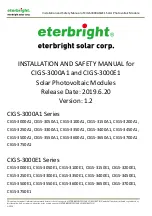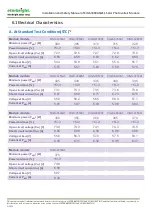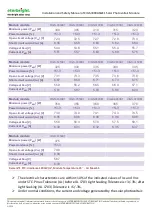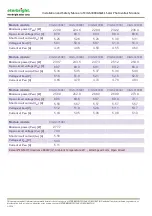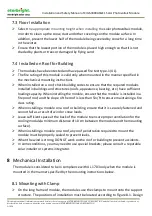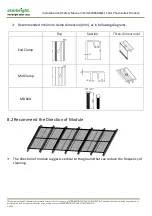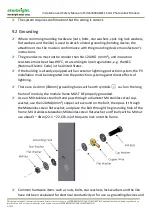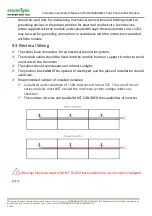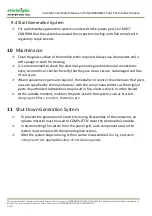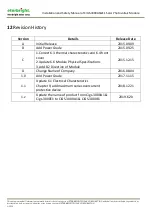
Installation and Safety Manual of CIGS-3000A1&E1 Solar Photovoltaic Module
This document and all information contained herein is the sole property of ETERBRIGHT SOLAR CORPORATION and shall not be distributed, reproduced, or
disclosed in whole or in part without the prior written consent of ETERBRIGHT SOLAR CORPORATION.
A3-224
Artificially concentrated sunlight shall not be directed on the module or panel
4.2 Cautions
Do not attempt to disassemble the modules, and do not remove any attached
nameplates or components from the modules.
Do not apply paint or adhesive to module top surface.
Do not use mirrors or other magnifiers to artificially concentrate sunlight on the
modules.
5.
Safety
5.1 Handling Safety
Wear non-slip gloves to prevent the modules from falling while handling the modules.
Keep children/pets away in the process of handling and installing the modules.
Do not stand or step on the module.
To avoid glass breakage, do not place any heavy objects on the module.
Do not drop the module heavily.
5.2 Installation Safety
DO NOT DISCONNECT UNDER LOAD.
COMPLETELY cover the module with an opaque material during installation to prevent
electricity from being generated.
Use ONLY insulated tools and insulated gloves that meet the electrical installation
standards.
Abide by the safety regulations for all other components used in the system, including
wiring and cables, connectors, charging regulators, inverters, storage batteries and
rechargeable batteries, etc.
Do not wear metallic rings, watchbands, ear, nose, lip rings or other metallic objects
while installing or maintaining photovoltaic systems.
The parts of installation CANNOT cover the drainage holes.
6.
Product Characteristics
The power rating of ETERBRIGHT SOLAR CORPORATION CIGS solar photovoltaic module are
measured under standard test conditions (Irradiance 1000W/m
2
, module temperature of
25
℃
(77
℉
), AM 1.5G ), so that the power output of module will vary
under actual
operating conditions.
The amount of DC power generated by the
solar photovoltaic module is
proportional to the
radiation intensity, but the voltage will vary depending on the temperature.

